How to Introduce Food Allergens
Parents are sometimes worried about giving common food allergens to their babies. However, it’s very unlikely that your baby will ...
Read MoreImportant notice to customers — product packaging changesLearn More
NEW FOOD PACKAGING IN STORE NOW
From August 2018, customers will notice our rebranded food packaging start to appear on shelf in all major stockists.
 CURRENT Packaging
CURRENT Packaging

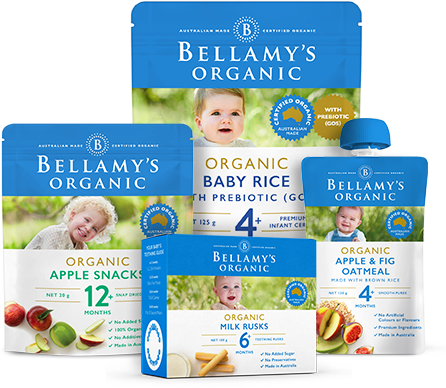 new Packaging
new Packaging
We are excited to announce our new packaging will start to appear on shelf from August 2018. This transition to new packaging will occur over a number of months. During this time there will be a mix of current and new packaging on shelf.
There are no major changes to these products, in some instances there is a small name change or slight recipe improvement, see below for the full details.
Products purchased via the website will be delivered to customers in our old packaging until the end of October. From November, products ordered from the website will be delivered in the new packaging.
Please note, our Infant Formula packaging will not be rebranded until later in 2019.
For any questions, connect with our team of accredited practising Dietitians on +61 3 6332 9200
Product name changes
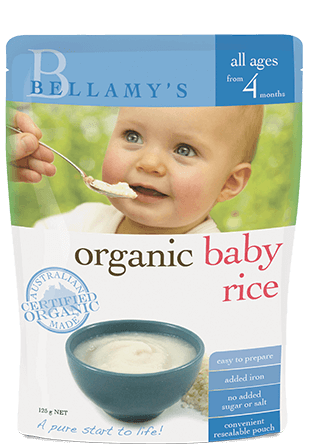 CURRENT Packaging
Organic Baby Rice
CURRENT Packaging
Organic Baby Rice

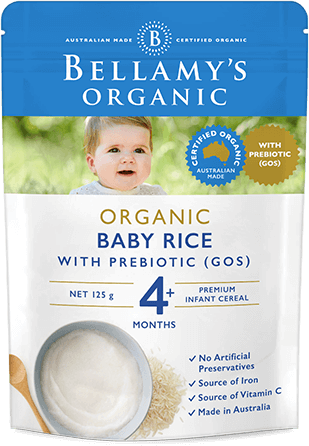 NEW Packaging
Organic Rice with Prebiotic (GOS)
Note: Our Baby Rice recipe has been upgraded to now include GOS Prebiotic
NEW Packaging
Organic Rice with Prebiotic (GOS)
Note: Our Baby Rice recipe has been upgraded to now include GOS Prebiotic
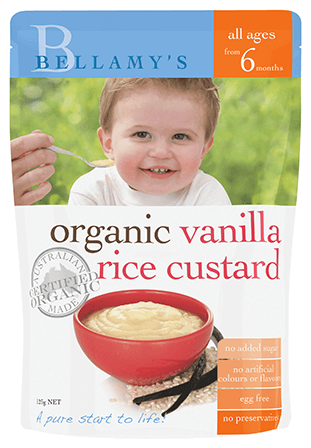 CURRENT Packaging
Organic Vanilla Rice Custard
CURRENT Packaging
Organic Vanilla Rice Custard

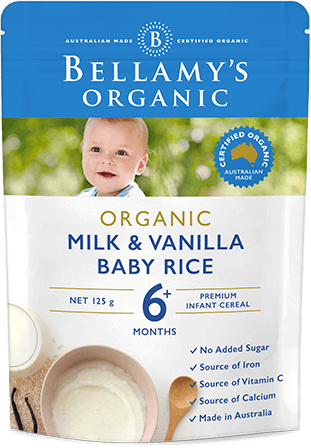 NEW Packaging
Organic Milk & Vanilla Baby Rice
NEW Packaging
Organic Milk & Vanilla Baby Rice
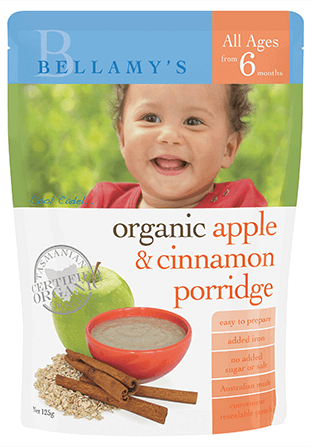 CURRENT Packaging
Organic Apple & Cinnamon Porridge
CURRENT Packaging
Organic Apple & Cinnamon Porridge

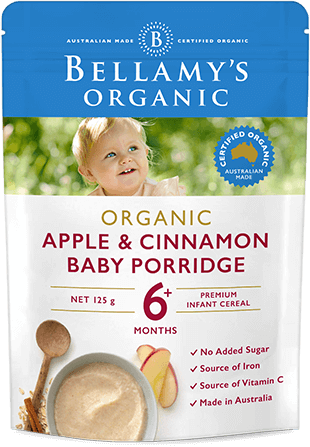 NEW Packaging
Organic Apple & Cinnamon Baby Porridge
NEW Packaging
Organic Apple & Cinnamon Baby Porridge
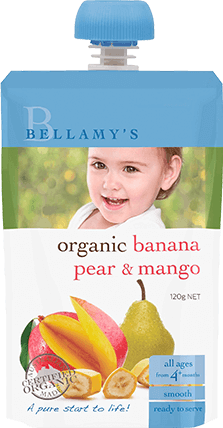 CURRENT Packaging
Organic Banana, Pear & Mango
CURRENT Packaging
Organic Banana, Pear & Mango

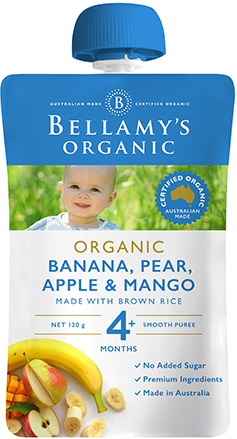 New Packaging
Organic Banana, Pear, Apple & Mango
New Packaging
Organic Banana, Pear, Apple & Mango
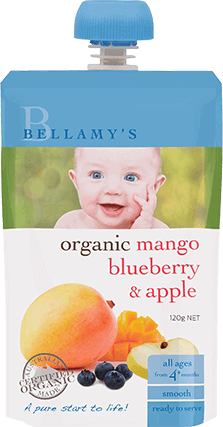 CURRENT Packaging
Organic Mango, Blueberry & Apple
CURRENT Packaging
Organic Mango, Blueberry & Apple

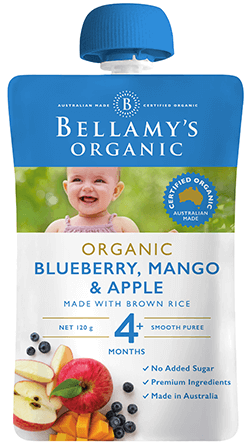 New Packaging
Organic Blueberry, Mango & Apple
New Packaging
Organic Blueberry, Mango & Apple
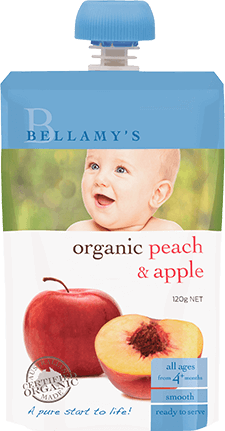 CURRENT Packaging
Organic Peach & Apple
CURRENT Packaging
Organic Peach & Apple

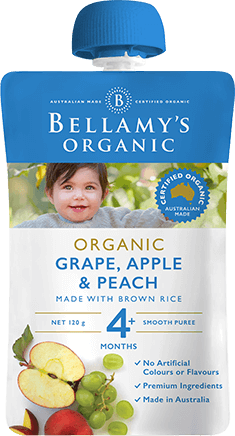 New Packaging
Organic Grape, Apple & Peach
New Packaging
Organic Grape, Apple & Peach
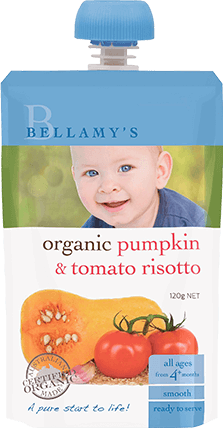 CURRENT Packaging
Organic Pumpkin & Tomato Risotto
CURRENT Packaging
Organic Pumpkin & Tomato Risotto

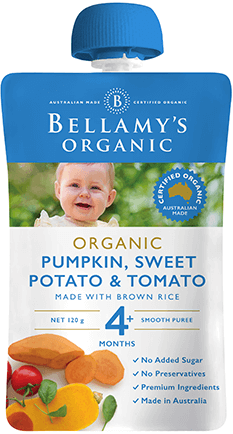 New Packaging
Organic Pumpkin, Sweet Potato & Tomato
New Packaging
Organic Pumpkin, Sweet Potato & Tomato
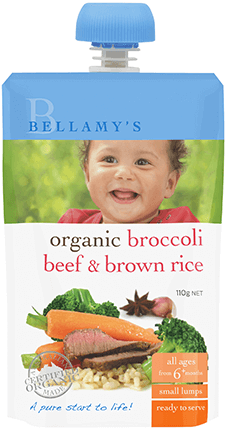 CURRENT Packaging
Organic Broccoli, Beef & Brown Rice
CURRENT Packaging
Organic Broccoli, Beef & Brown Rice

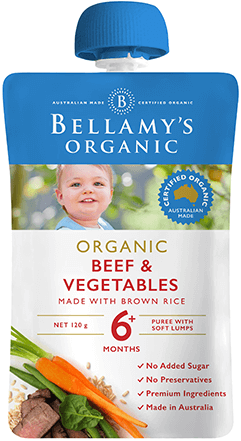 New Packaging
Organic Beef & Vegetables
New Packaging
Organic Beef & Vegetables
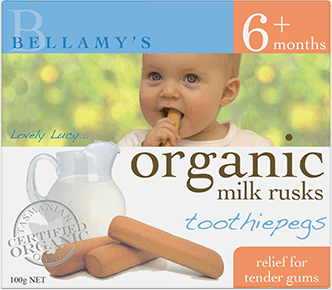 CURRENT Packaging
Organic Milk Rusks Toothiepegs
CURRENT Packaging
Organic Milk Rusks Toothiepegs

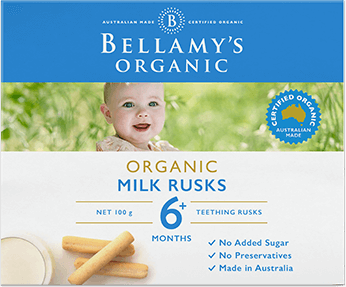 New Packaging
Organic Milk Rusks
New Packaging
Organic Milk Rusks
Only wheat grains and ingredients made from wheat, need be avoided by those with a childhood wheat allergy.
This makes a wheat free diet similar to a gluten free diet, but with a few more food choices. If you are eating gluten free; the grains wheat, rye, triticale, spelt, barley, controversially oats, and ingredients made from them, are all off the menu.
The bulk of the wheat free diet mimics gluten free eating, consisting of fresh fruits, vegetables, plain meats, eggs, plain dairy foods, legumes, nuts and seeds.
Most commercial pastas, breads and baking products consumed tend to be gluten free. However, 100% rye bread and other wheat-free, rye, barley and oat products can be eaten. For example, barley malt extract in breakfast cereals is no longer a concern, opening up a wider choice of rice and corn-based cereals for those avoiding wheat instead of gluten.
You will need to become familiar with words on a food label that refer to wheat and its different forms.
Seek help from an experienced dietitian to advise how to change the diet to ensure your child’s nutrition is maintained for growth and development. Further information can also be found at these sites.
Further reading:
https://www.allergy.org.au/patients/food-allergy/ascia-dietary-avoidance-for-food-allergy/wheat
https://allergyfacts.org.au/allergy-anaphylaxis/food-allergens/wheat
https://www.slhd.nsw.gov.au/rpa/allergy/resources/allergy/wheatallergy.pdf
References:
Venter C et al. A patient-specific approach to develop an exclusion diet to manage food allergy in infants and children. Clin Exp Allergy. 2018;48:121–137.
Jessica R Biesiekierski. What is gluten? Journal of Gastroenterology and Hepatology 2017; 32 (Suppl. 1): 78–81. doi:10.1111/jgh.13703